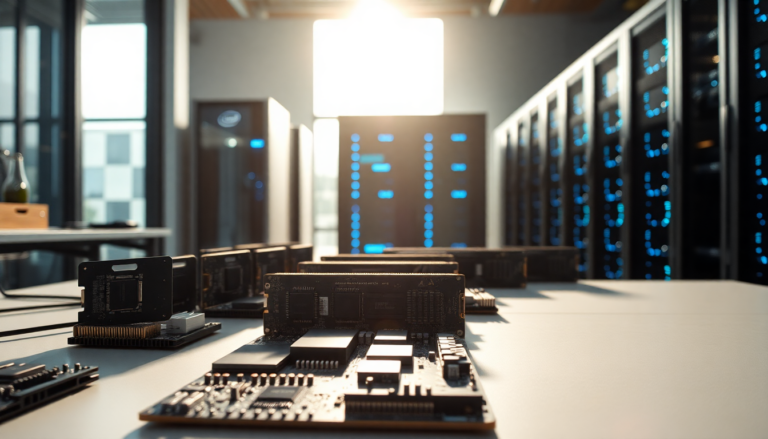Argomenti trattati
As technology continues to evolve, the demand for high-performance computing solutions is heating up, especially in the fields of artificial intelligence (AI) and data processing. Recently, Intel made some exciting announcements at the AI Summit in Seoul, showcasing a range of new products that are set to meet these demands head-on. In this article, we’ll dive into the details of the Diamond Rapids CPUs and Jaguar Shores accelerators, exploring the innovative memory technologies they’ll employ and what this might mean for the market.
Market Overview: Intel’s Latest Offerings
Intel is making waves with its latest product announcements, clearly demonstrating its commitment to boosting performance in data centers and AI applications. The launch of the Diamond Rapids CPUs and Jaguar Shores accelerators marks a pivotal moment for the company as it seeks to redefine its standing in a fiercely competitive landscape. Industry analysts suggest that the shift toward next-generation memory technologies, like the 2nd-generation MRDIMM modules and HBM4 stacks, is critical for meeting the rising computational demands of modern AI workloads. But what does this really mean for businesses?
The Diamond Rapids CPUs are expected to harness the advanced capabilities of SK hynix’s 2nd-generation MRDIMM modules, which promise substantial performance improvements. By integrating dual DDR ranks operating in a multiplexed mode, these modules are designed to significantly enhance data throughput. This innovation comes at a time when organizations are on the lookout for solutions that can efficiently handle complex AI models and vast datasets. Isn’t it thrilling to think about the possibilities?
Detailed Analysis of Key Products
Let’s talk about the Jaguar Shores AI accelerator, a notable advancement for Intel, especially as it will carry the Gaudi branding for the very first time. This processor is set to utilize HBM4 memory, which is crucial for ensuring high-bandwidth access to data during AI training and inference tasks. By integrating HBM4, Intel aims to eliminate the performance bottlenecks currently faced in AI applications, making it a key player in the future of machine learning and deep learning. How will this reshape the landscape of AI?
While specifics about the number of HBM4 stacks in the Jaguar Shores remain under wraps, it’s clear that this advanced memory technology highlights Intel’s focus on delivering products that can tackle the rigorous demands of AI workloads. With businesses increasingly adopting AI solutions, the push for high-performance hardware is set to drive the market towards innovations that promise speed and efficiency. Are you ready to embrace these changes?
On the CPU side, the Diamond Rapids family is gearing up to utilize SK hynix’s 2nd-generation MRDIMM modules, which will come in both 64 GB and 128 GB configurations. The anticipated performance enhancements over previous generations are expected to attract enterprise customers looking to optimize their data processing capabilities. This introduction aligns perfectly with the growing trend of employing memory technologies that not only improve speeds but also cut down on latencies—an essential factor for maintaining efficient operations.
Future Trends and Investment Opportunities
Looking ahead, the trends emerging from Intel’s latest product announcements paint a clear picture for the tech industry. The emphasis on high-bandwidth memory solutions, like HBM4 and advanced MRDIMM modules, signifies a broader shift towards optimizing hardware for AI-driven applications. This trend opens up significant investment opportunities for companies eager to leverage these advancements in their infrastructures. Are you considering where to place your bets?
The anticipated performance gains from these new memory technologies could translate into substantial ROI for organizations that integrate them into their systems. Moreover, as AI continues to permeate various sectors, the demand for robust computing solutions is likely to escalate, further driving investments in next-generation hardware. Isn’t it exciting to think about the potential here?
Intel’s unwavering commitment to innovation is evident in its ongoing efforts to enhance its product lineup, sending a clear message to investors and industry players that the company is well-positioned to tackle future challenges. With a keen eye on developments in memory technology, stakeholders can look forward to exciting opportunities on the horizon as Intel prepares to unveil its next-generation products. Will you be ready to seize the moment?

